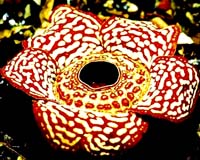| . |  |
. |
Sydney (AFP) Nov 10, 2009 Australia's koalas could be extinct in 30 years, conservationists warned Tuesday, calling for the iconic creatures to be declared an endangered species. The Australian Koala Foundation said a recent survey indicated numbers may have plunged by more than half in the past six years due to climate change, disease and over-development. The study showed there were between 43,000 and 80,000 koalas on mainland Australia, down from an estimated 100,000 in 2003, said Foundation chief Deborah Tabart. "We're saying (numbers) could be as low as 43,000 and as high as 80,000, Tabart told public broadcaster ABC Radio. Large numbers have been killed by an outbreak of chlamydia, a sexually transmitted disease, while others have been affected by loss of habitat due to deforestation and climate change, Tabart said. Hotter, drier conditions had reduced the nutritional value of their staple food, eucalyptus leaves, leading to fatal malnutrition, she said. "I really think climate change is starting to affect koala populations," she said. Tabart said the findings, which were based on surveys of almost 2,000 forest sites, pointed to total extinction of the species within 30 years without government action. Conservation groups unsuccessfully tried to have the animals declared a vulnerable species in 2006, but Tabart said the new data was proof of a "drastic decline". "There has been a great deal of opposition to the protection of the koala over many years and I think that still exists," she said. Researcher Bill Ellis said he'd found evidence of localised extinctions and there were "major declines in populations" along the east coast. The government's threatened species committee was due to make a recommendation by mid-2010, but representative Bob Beeton said they would not be swayed by its status as one of the country's favourite animals. "There's a number of species which are charismatic and emotionally charged. We don't consider that," said Beeton. "I mean, we'd consider the koala with the same level of diligence and dedication as if it were the death adder." Share This Article With Planet Earth
Related Links Darwin Today At TerraDaily.com
 New hope for world's biggest and weirdest flower
New hope for world's biggest and weirdest flowerUlu Geroh, Malaysia (AFP) Nov 9, 2009 Deep in the jungles of Southeast Asia blooms the world's biggest flower -- a massive fleshy orb designed by nature to attract insects by mimicking the colour and stench of rotting meat. The bizarre bloom, named Rafflesia after famed British colonialist Sir Stamford Raffles who stumbled across one in Borneo in 1818, is under threat from deforestation and harvesting for traditional medicine. ... read more |
|
| The content herein, unless otherwise known to be public domain, are Copyright 1995-2009 - SpaceDaily. AFP and UPI Wire Stories are copyright Agence France-Presse and United Press International. ESA Portal Reports are copyright European Space Agency. All NASA sourced material is public domain. Additional copyrights may apply in whole or part to other bona fide parties. Advertising does not imply endorsement,agreement or approval of any opinions, statements or information provided by SpaceDaily on any Web page published or hosted by SpaceDaily. Privacy Statement |